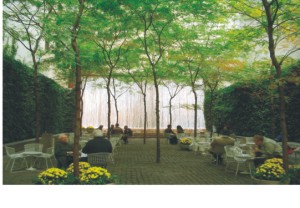
LEED® is Essential and Cost – Justified
“Think global act local” goes the bumper sticker. The benefits of sustainable design start with lower operating costs for the owner/occupant but extend to community and climate effects that benefit everyone. This brief provides an overview of these benefits and how LEED® addresses them. Subsequent briefs will explore each of these aspects in greater detail.
Financial Benefits
A sustainable building produces several financial rewards for its owner(s). The most evident comes from lower utility operating costs in the form of reduced energy and water use over a comparable code-base building, the least efficient building “the law will allow”. Although these measurable awards are the most apparent, they are far from the most substantial.
There are also less obvious benefits, such as improved productivity in employees, that result from an improved indoor environment. Salaries are, by far, the largest expense for most companies and institutions so this can have a significant impact on the bottom line. For retailers, it has been shown that a sustainable feature such as daylighting can increase sales up to 40%!1 Public institutions such as schools can benefit as well. Studies have shown that students in sustainable buildings consistently perform better than their counterparts in traditional schools because of better indoor air quality, comfort, and daylighting.2 Employer costs are lower because of fewer sick days and better worker retention. A few percent increase in productivity, typical for LEED® buildings, produces financial incentives that can dwarf utility savings alone.
Community Benefits
The community in which a LEED® certified building resides will realize several positive effects. The reduction of utility use in the form of energy, water, and sewage will contribute to limited growth in utility infrastructure. Fewer power plants, transmission lines, and water and sewer projects keeps costs down for everyone in the community. The promotion of bicycles, mass transit, and carpooling will alleviate traffic congestion and improve air quality. Other sustainable features such as a reduced heat island effect and less storm water runoff will also contribute to improving the conditions of the surrounding community and ecosystems.
Global Benefits
The far reaching benefits of a LEED® certified building do not end in the community. Global effects are experienced as well. Reduced emissions of greenhouse gases such as CO2 and CFCs occur through lower energy consumption and carefully selected fuels and refrigerants. Reusing materials and using materials with recycled content preserves finite resources. In addition, the use of rapidly renewable and sustainable building materials will aid in the growth and maturity of those markets, which will lower costs for everyone in the future. Perhaps one of the most important global effects of a sustainable building is its ability to raise awareness of several issues that will have a positive effect on our economic and environmental health.
LEED®: Putting it all Together
The LEED® rating system brings the global, local, and building-specific benefits of sustainable construction together in five main credit designations: Sustainable Sites, Water Efficiency, Energy & Atmosphere, Materials & Resources, and Indoor Environmental Quality. Future LEED® Briefs will explore each of these categories in detail.
1 Heschong, 1999, “Skylighting and Retail Sales: An Investigation into the Relationship Between Daylighting and Human Performance.”
2 Heschong Mahone Group, “Daylighting in Schools: An Investigation into the Relationship Between Daylight and Human Performance,” 1999. Available at: http://www.h-m-g.com.




